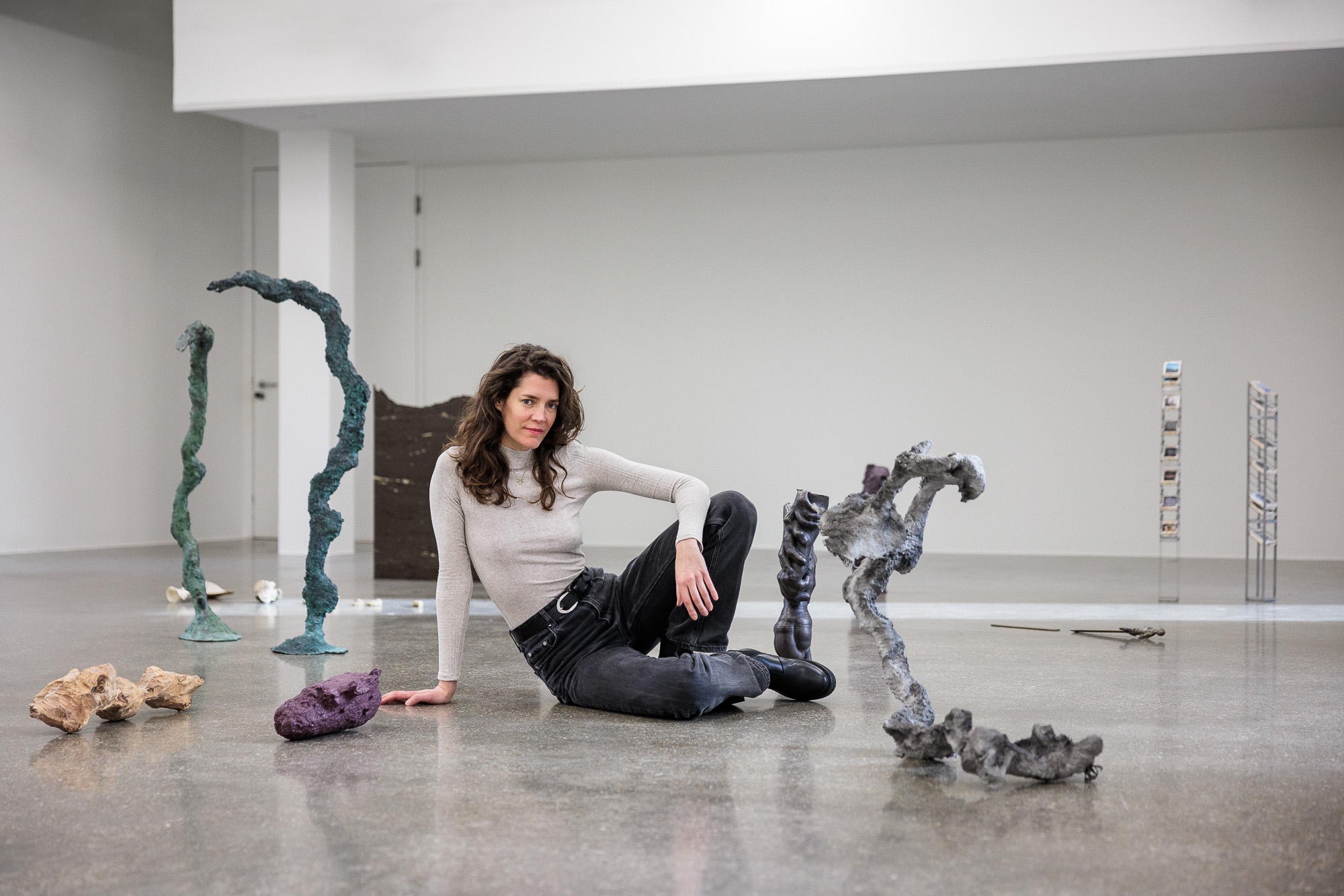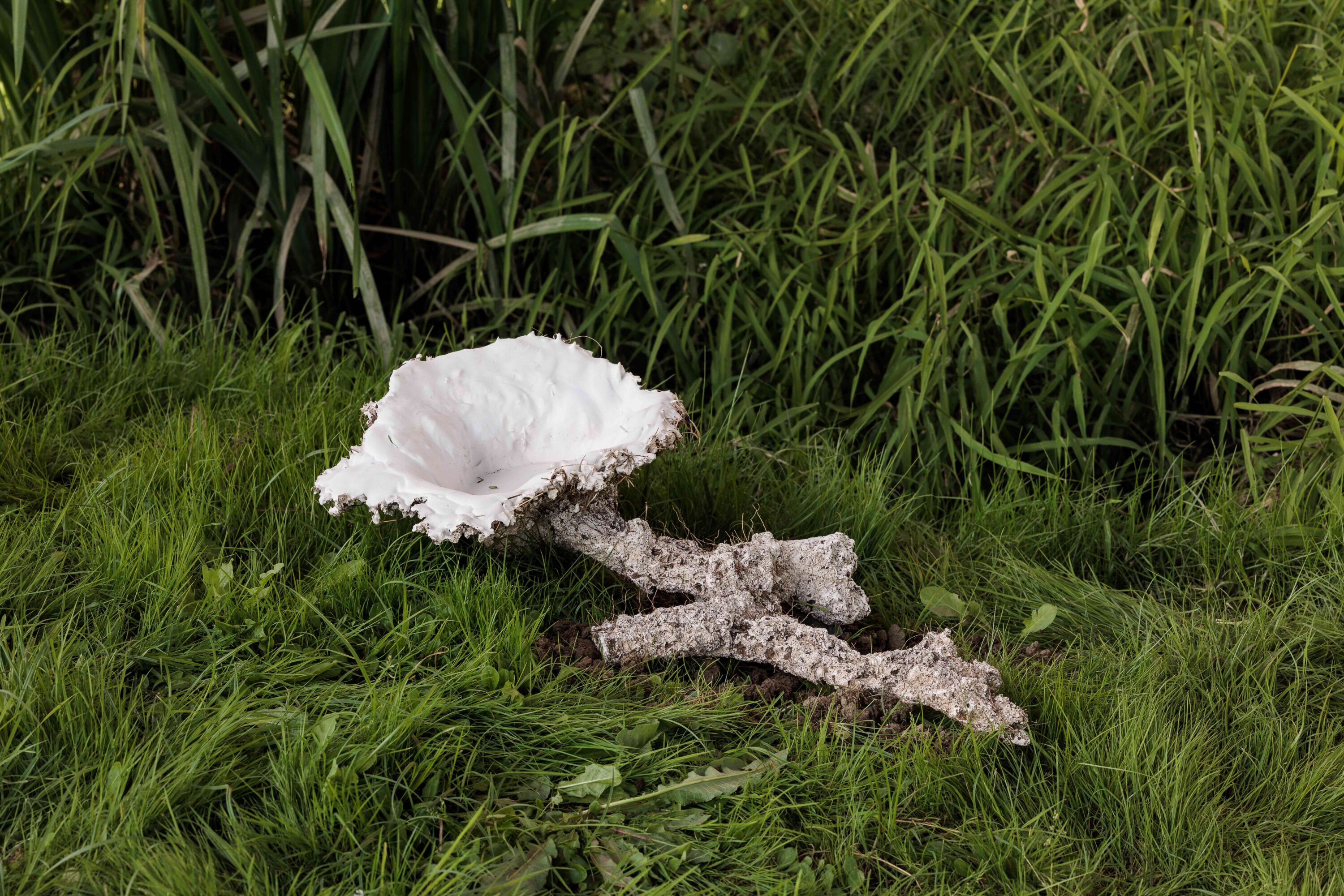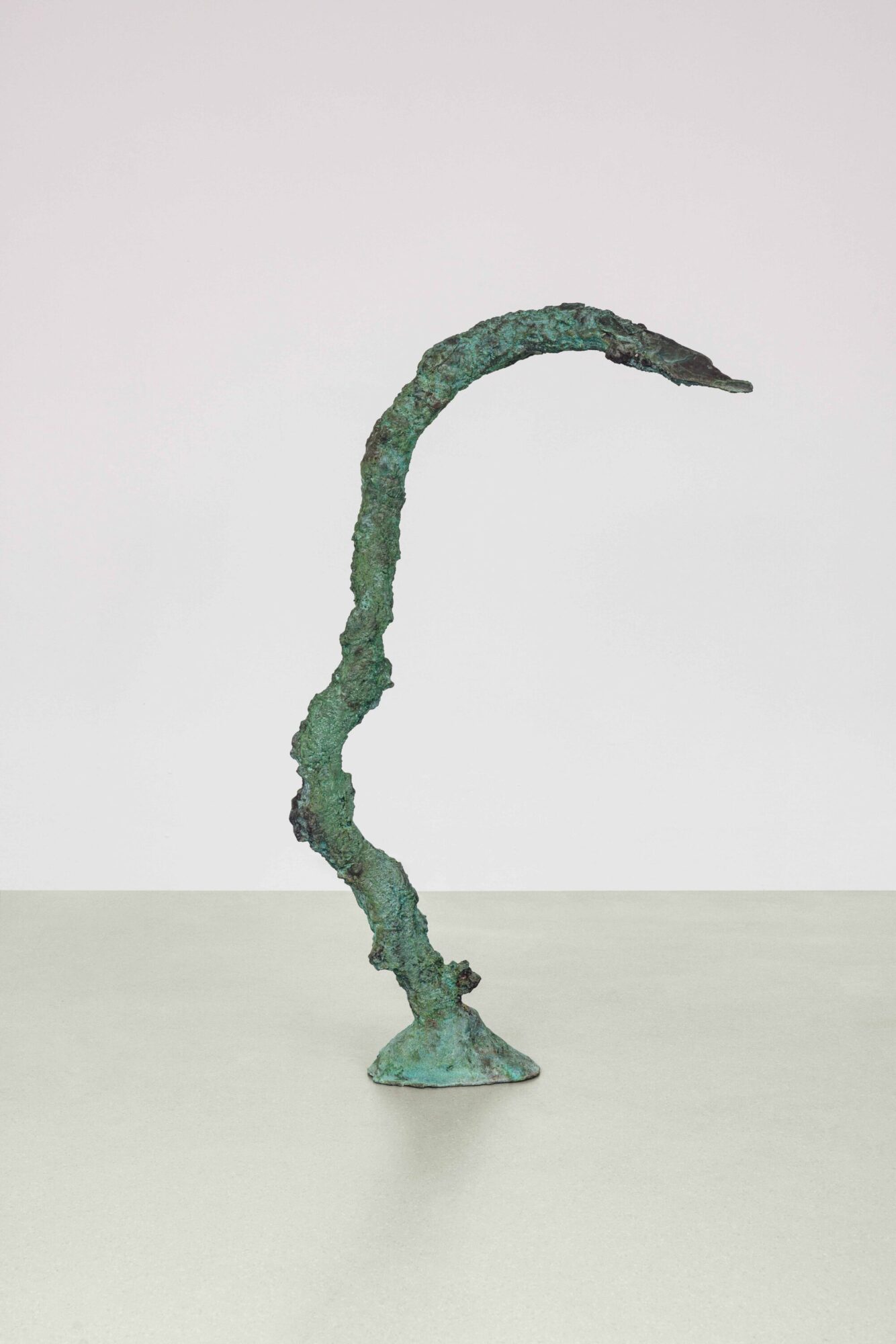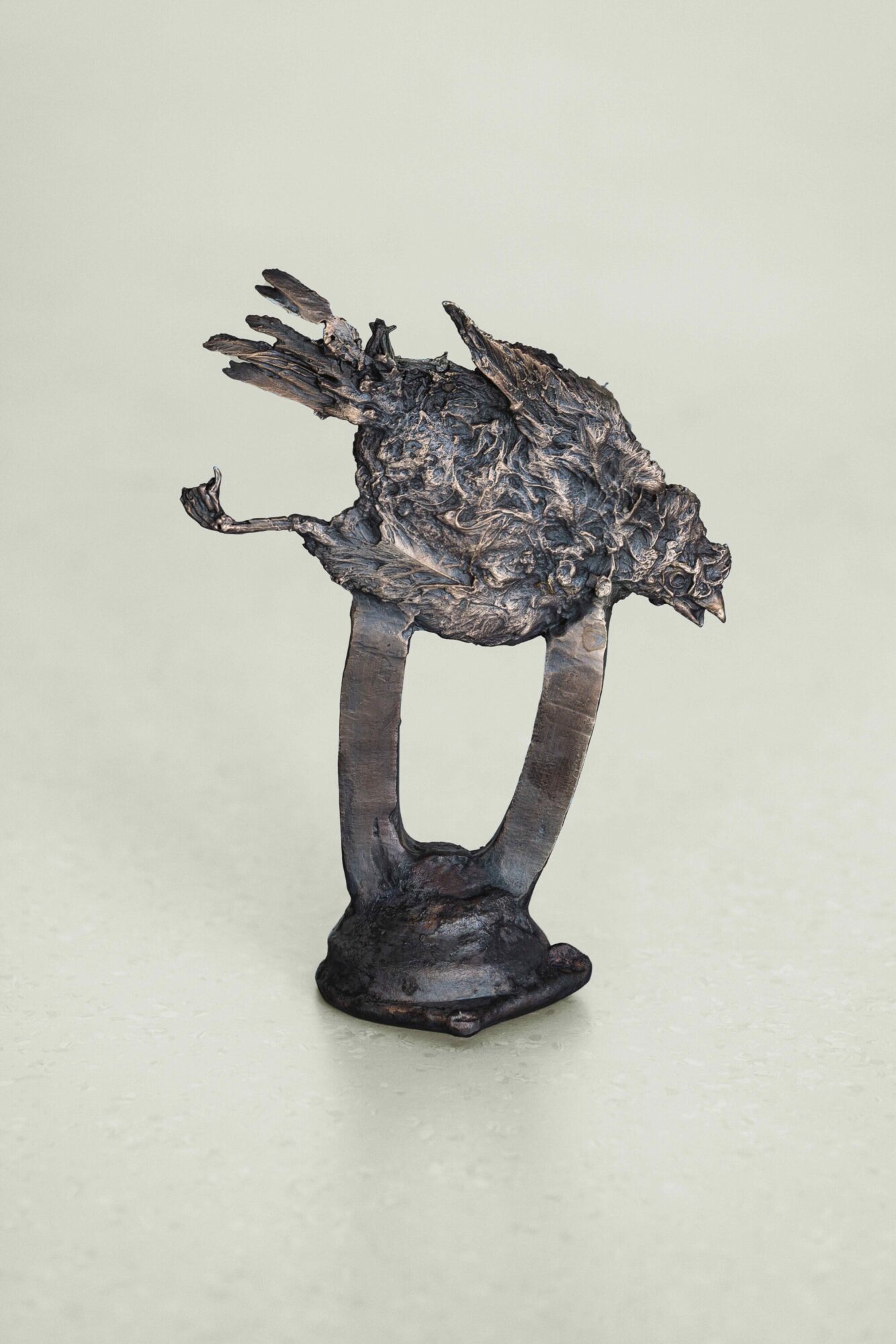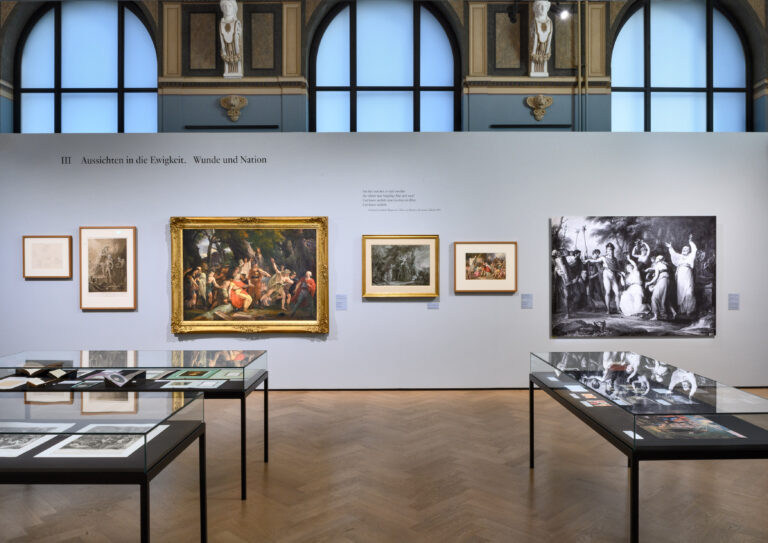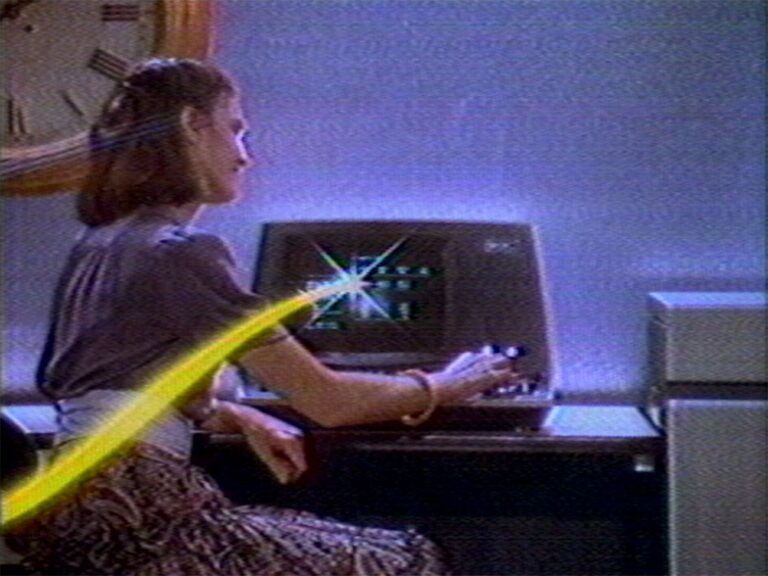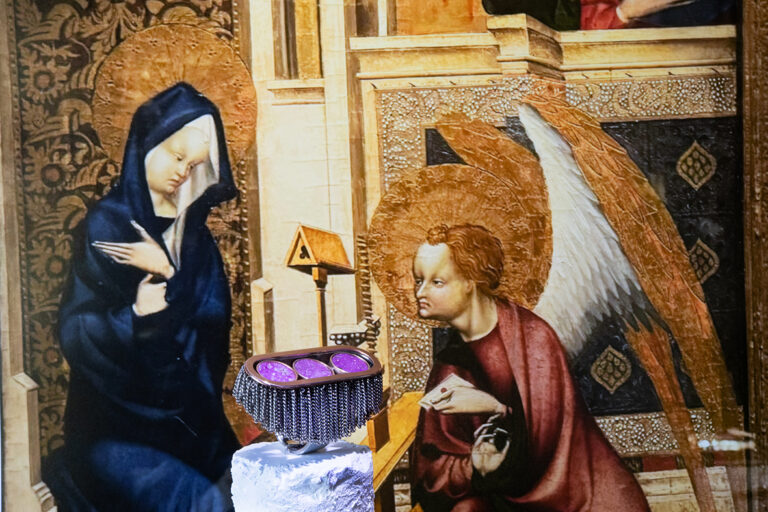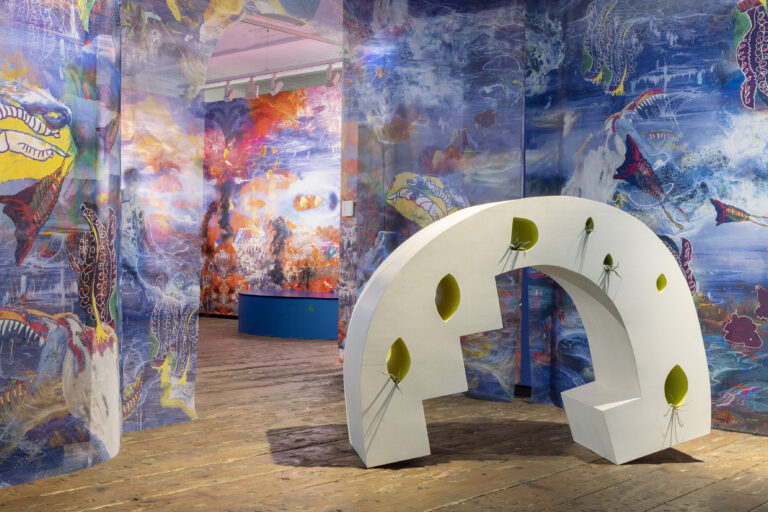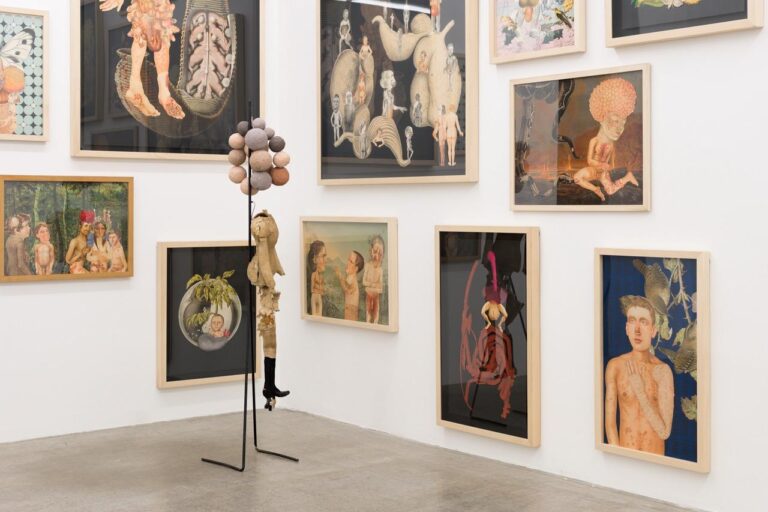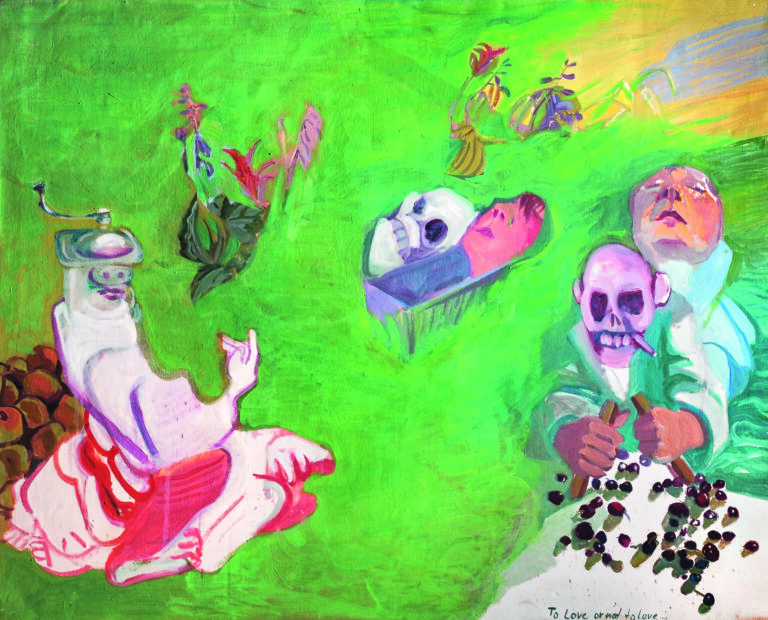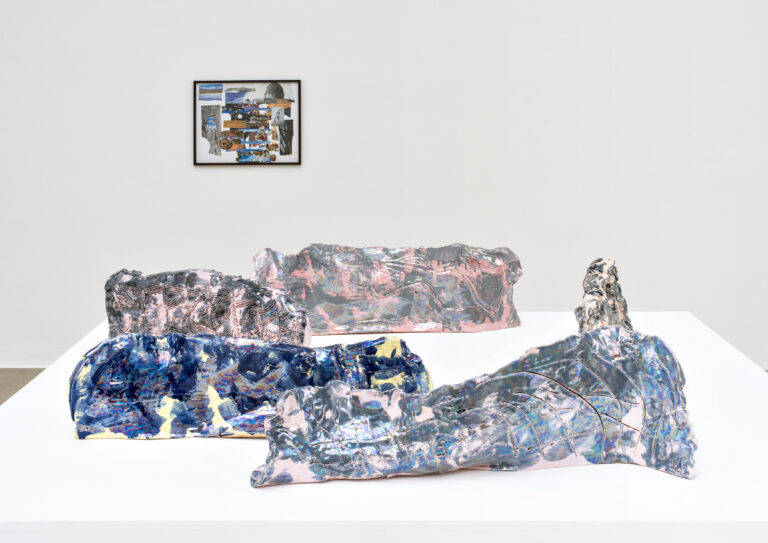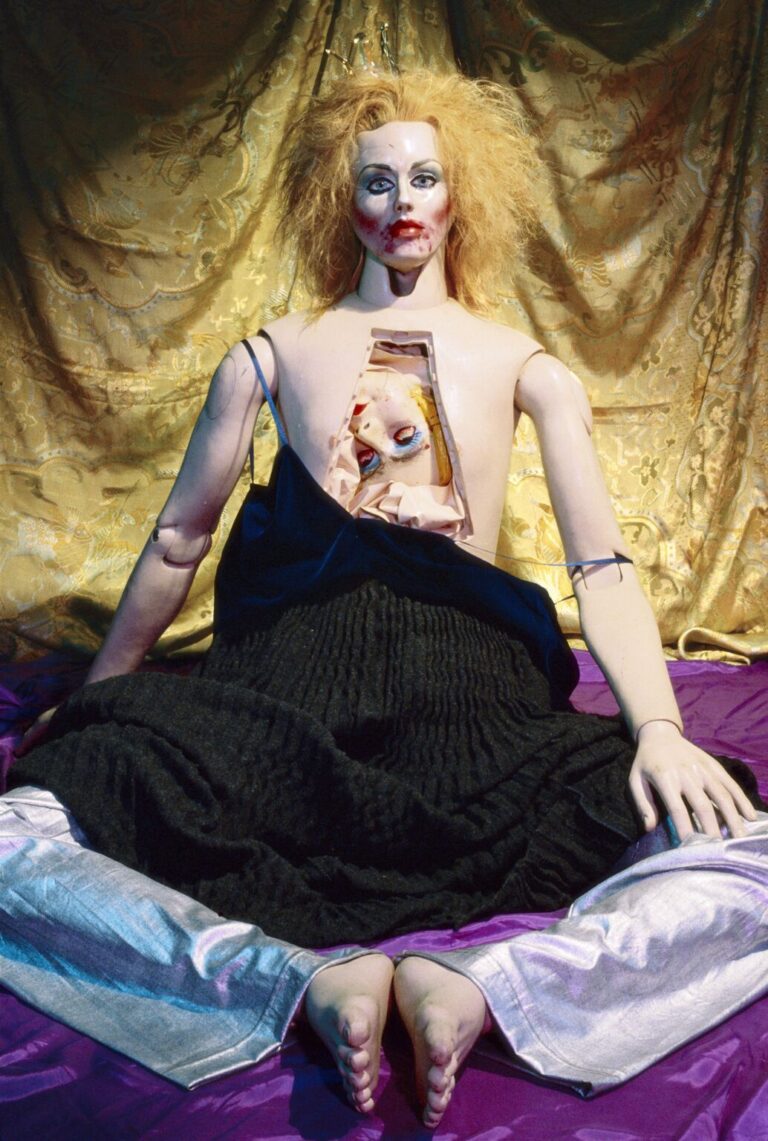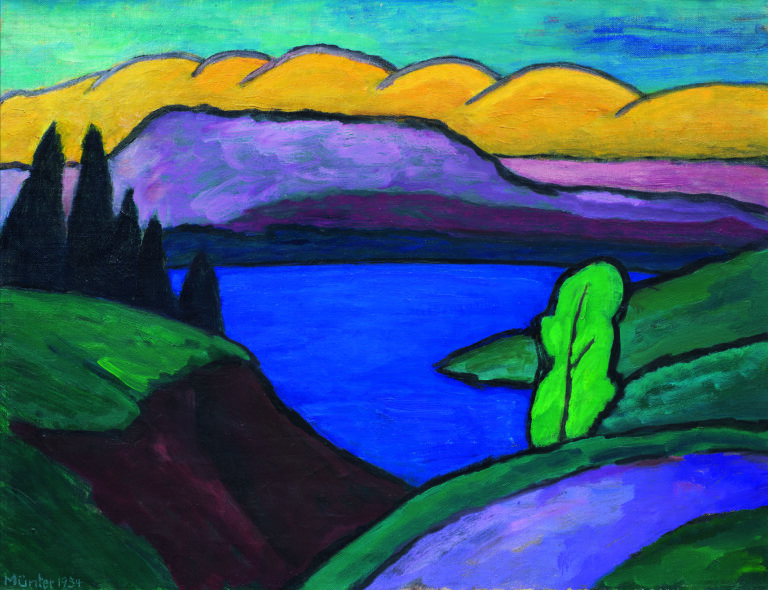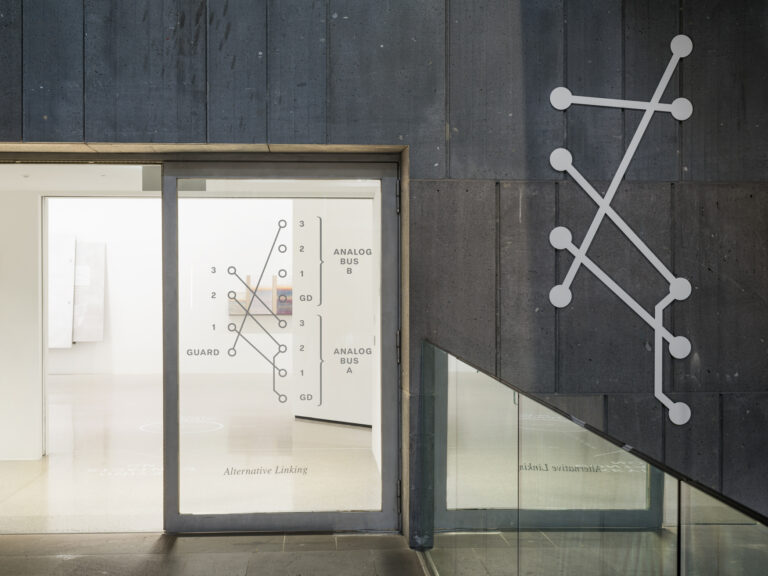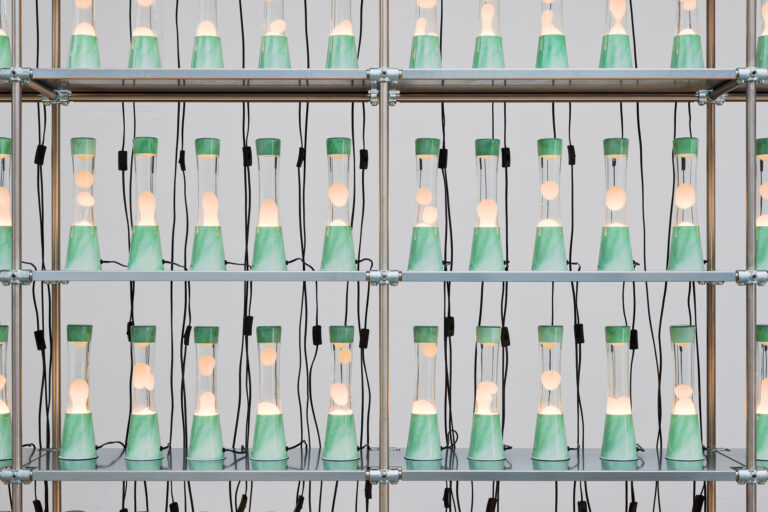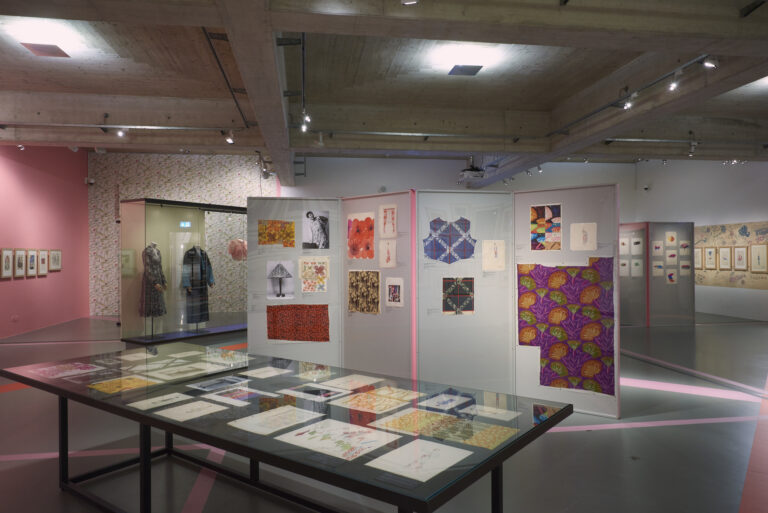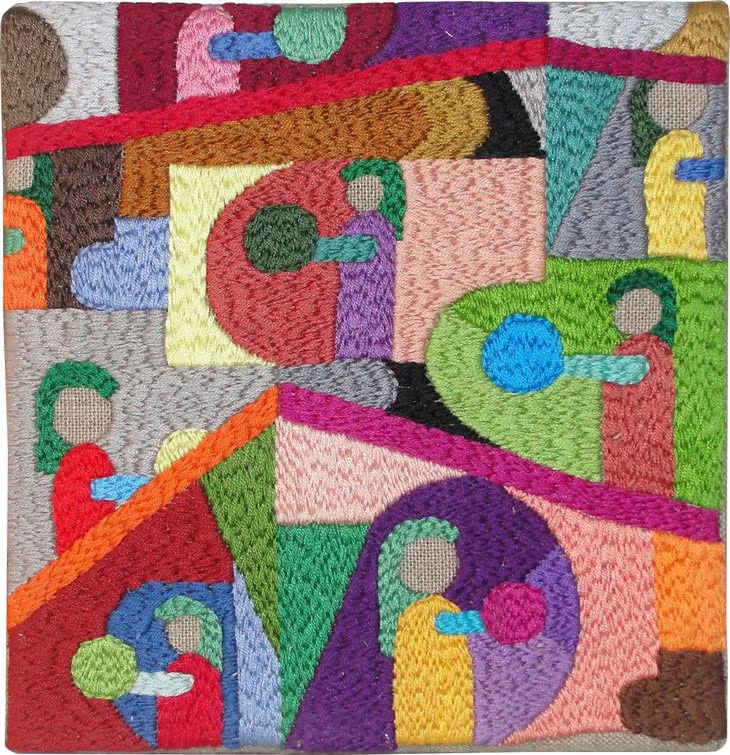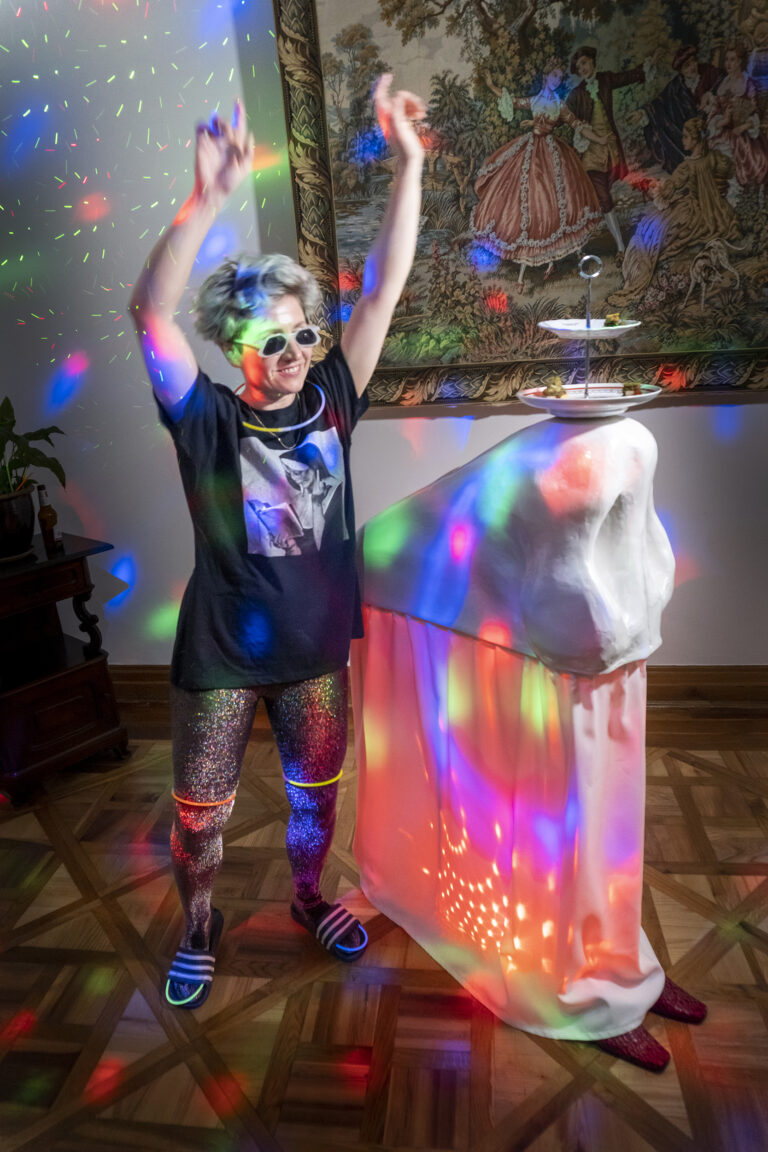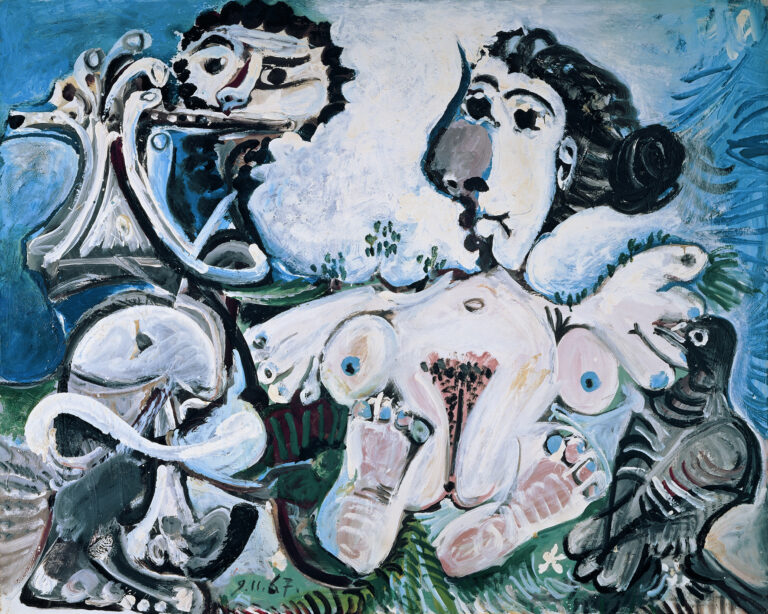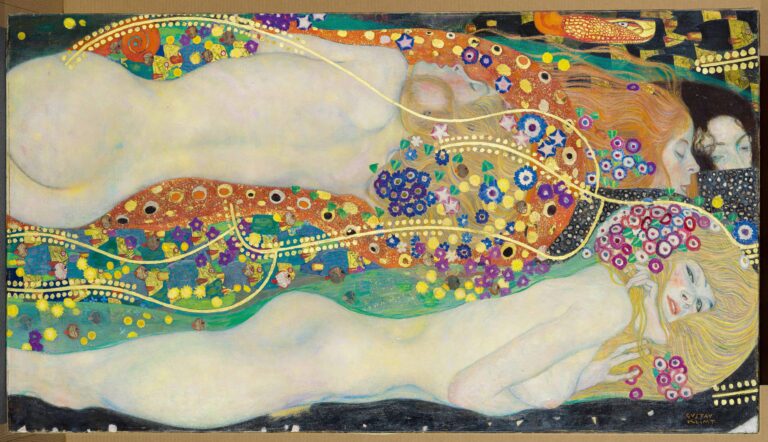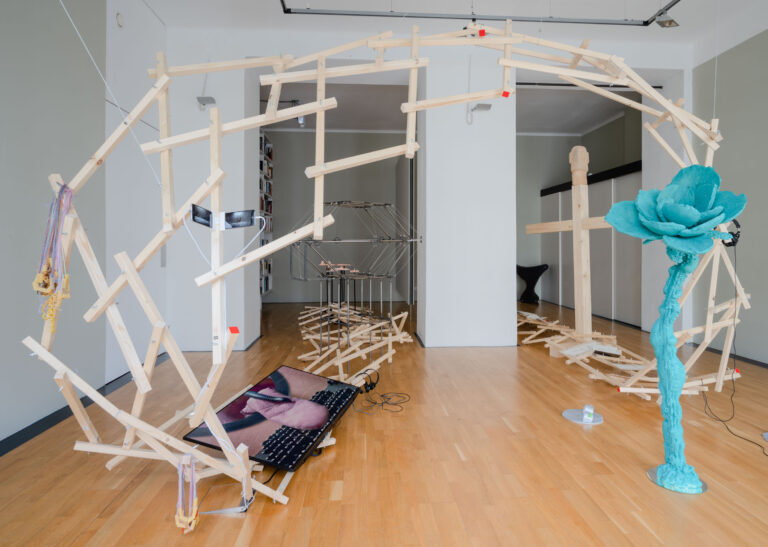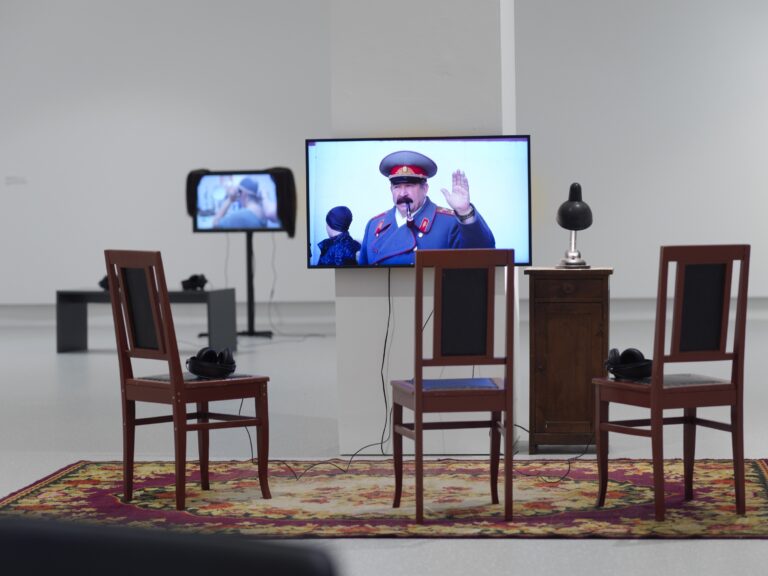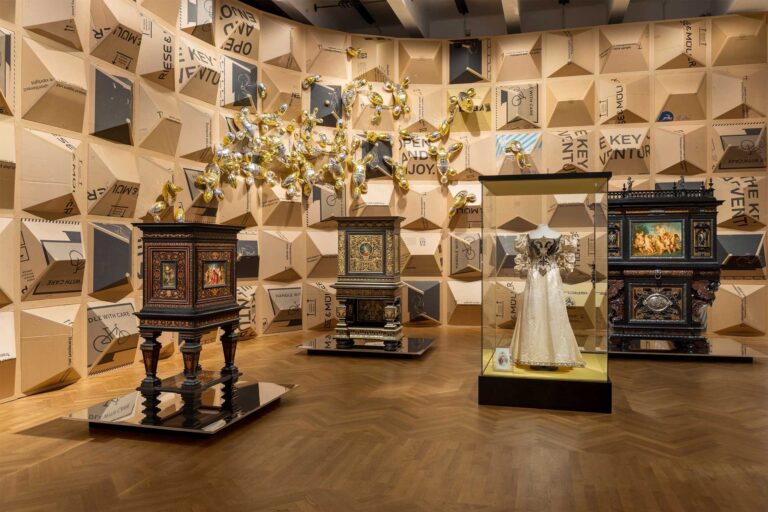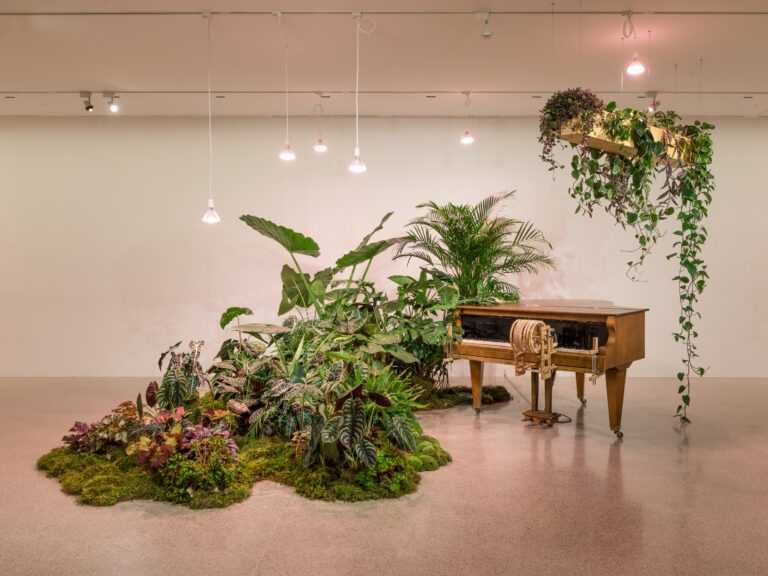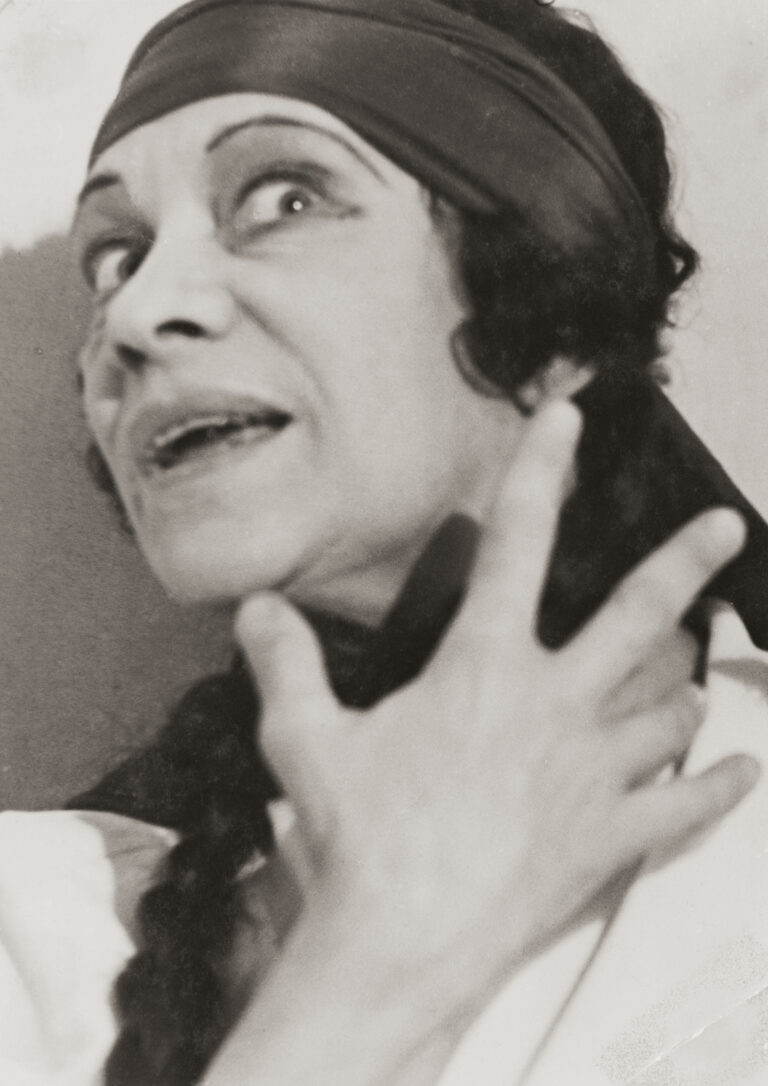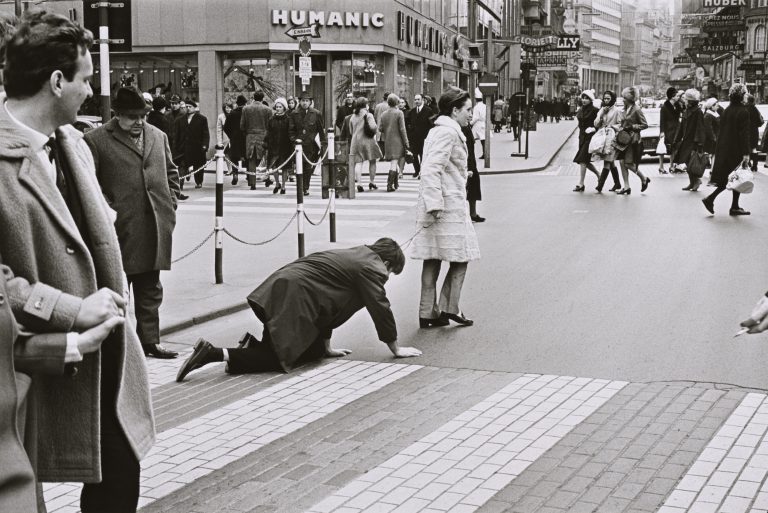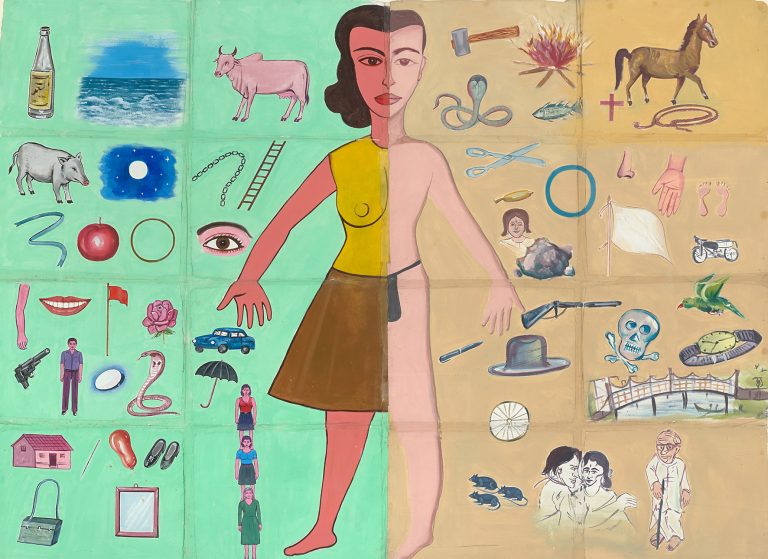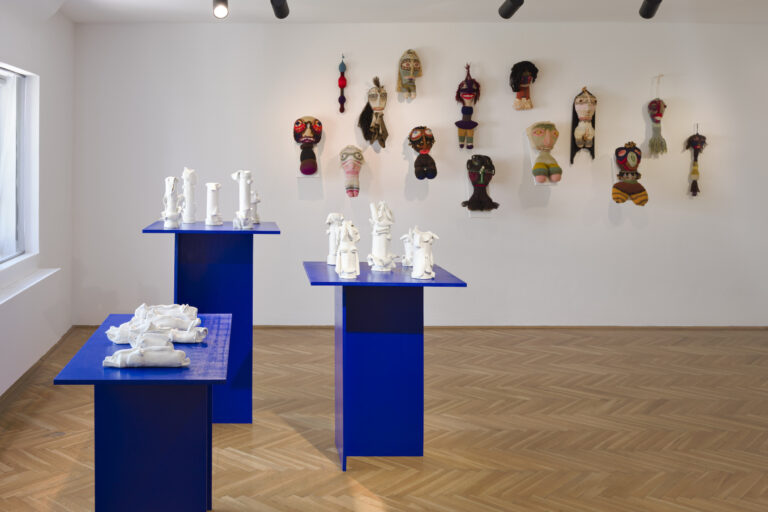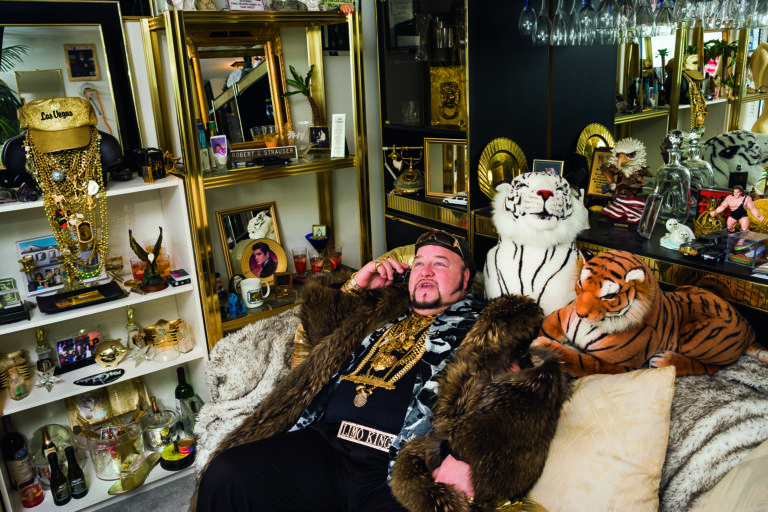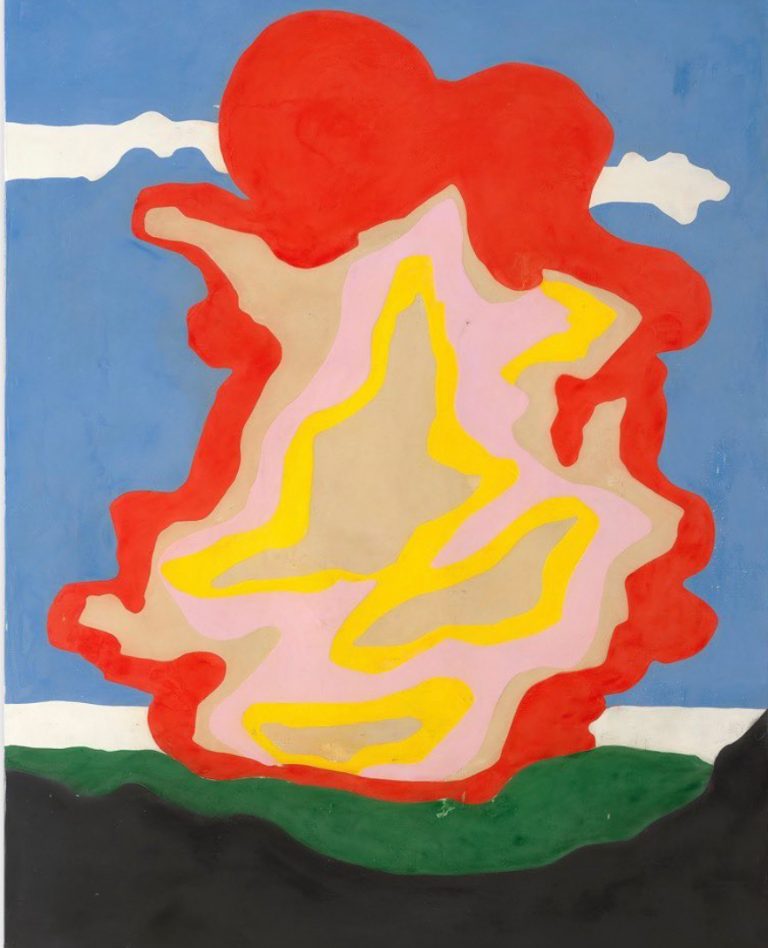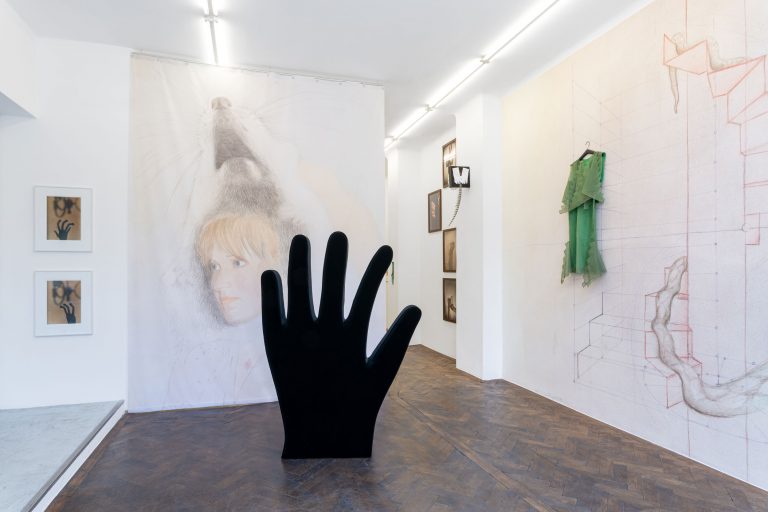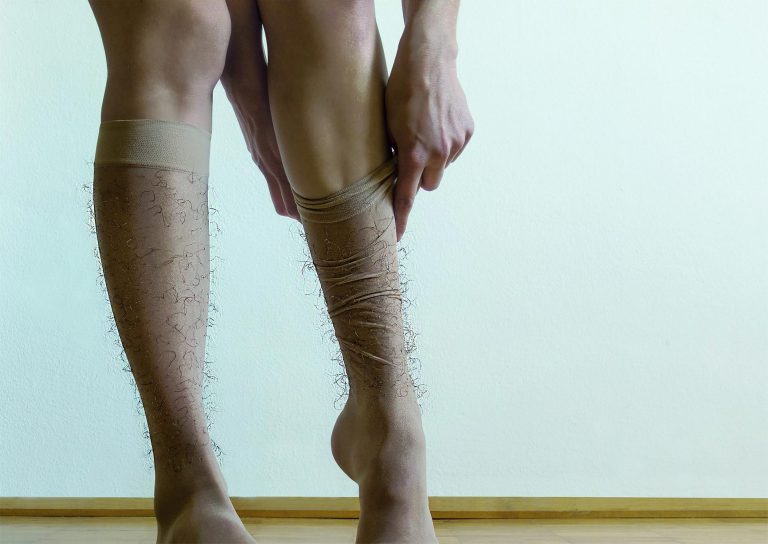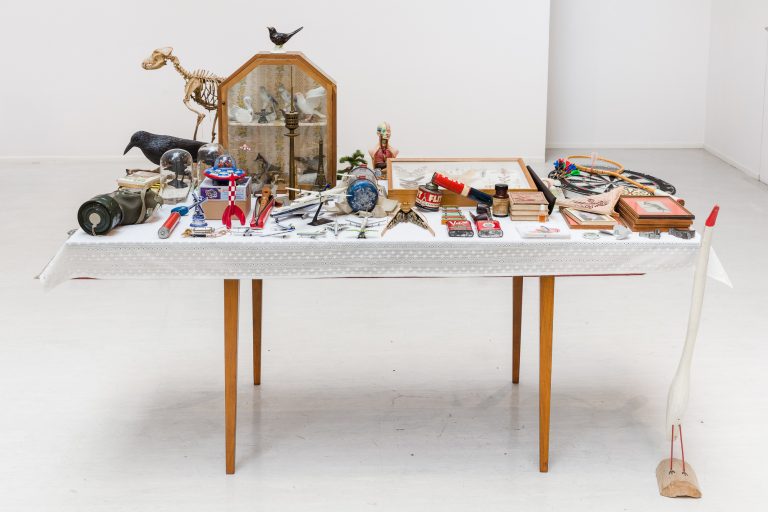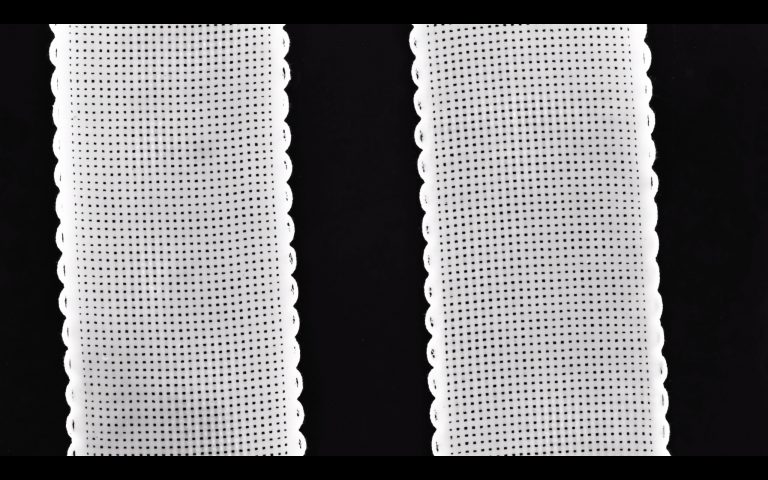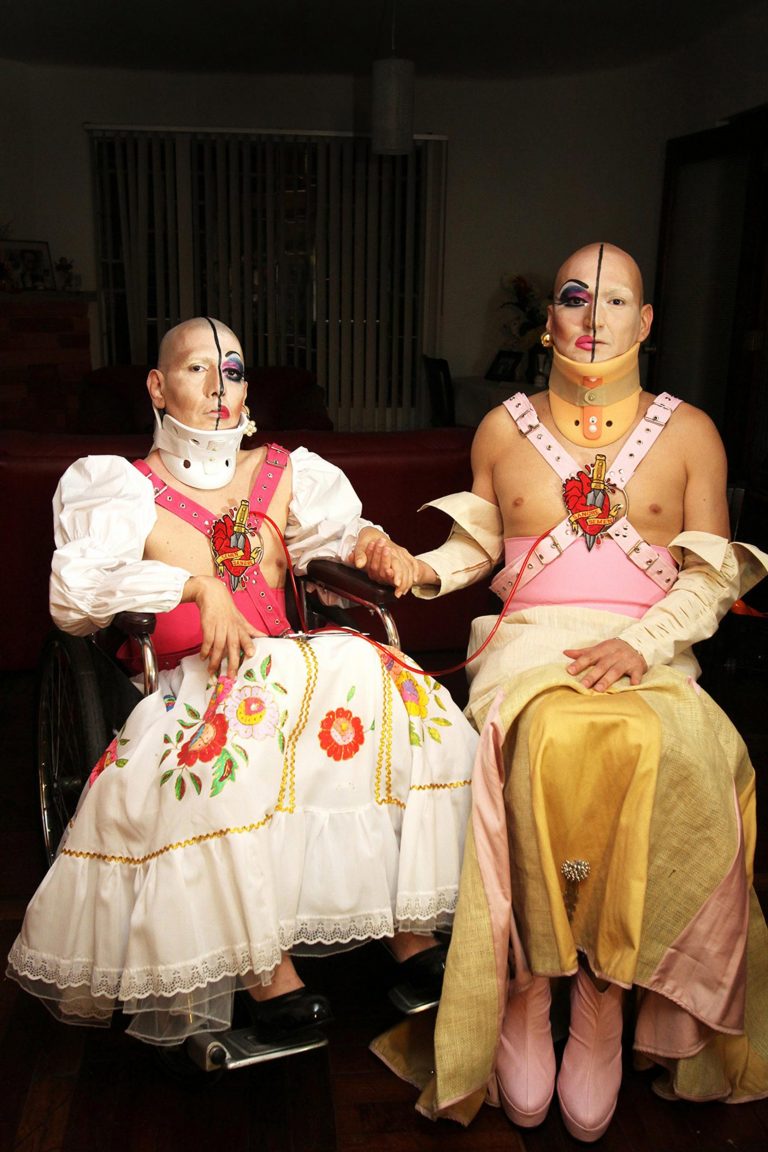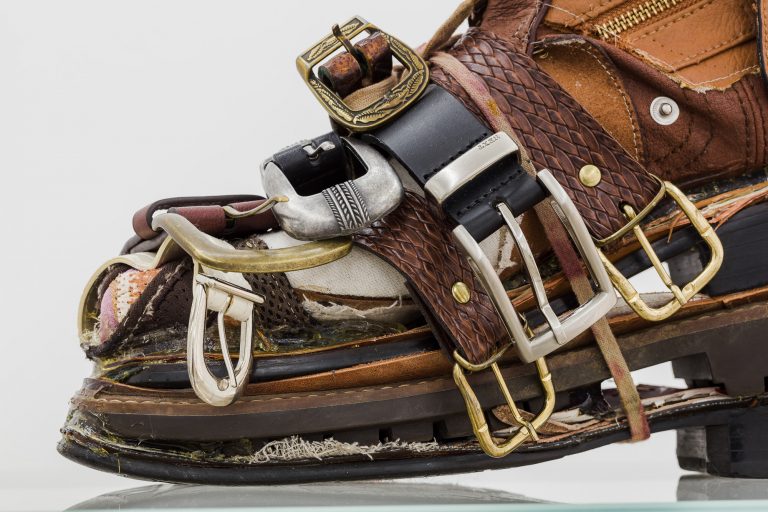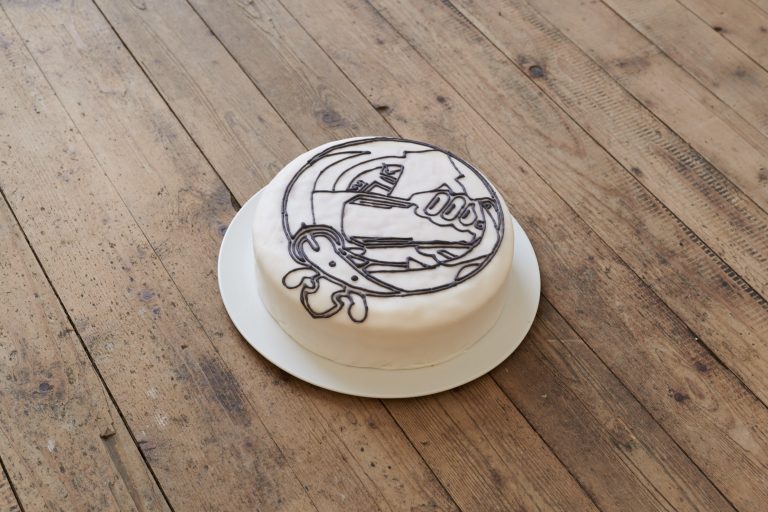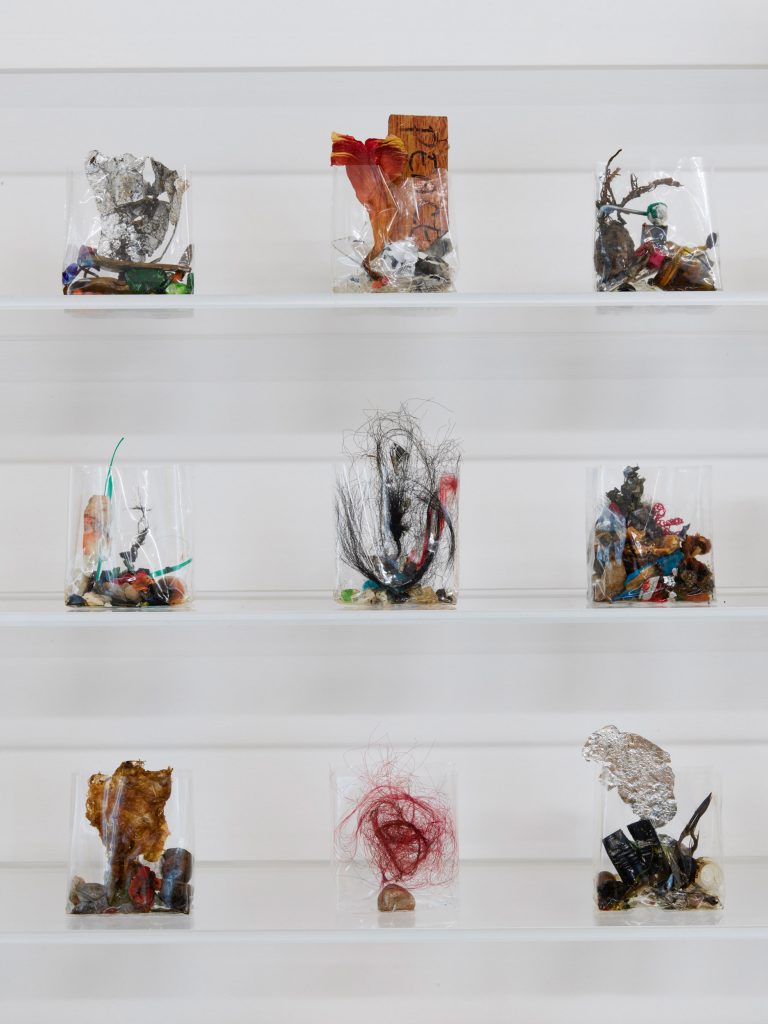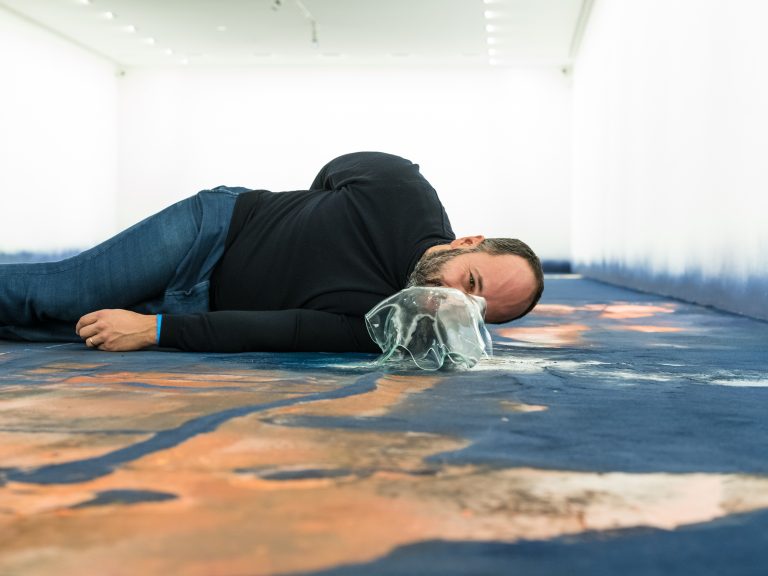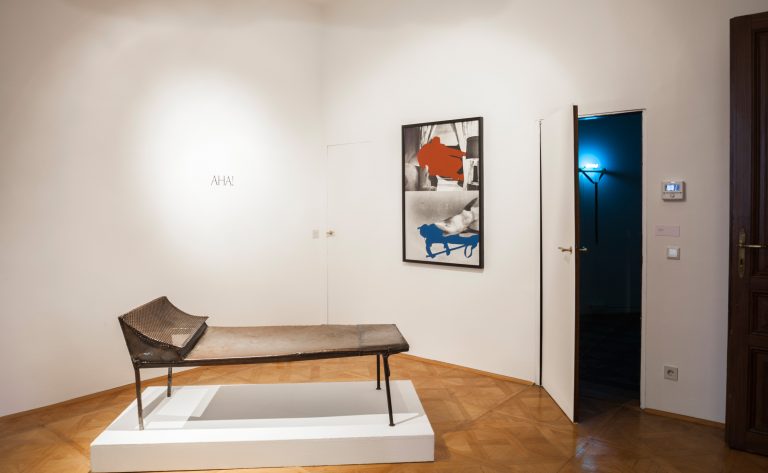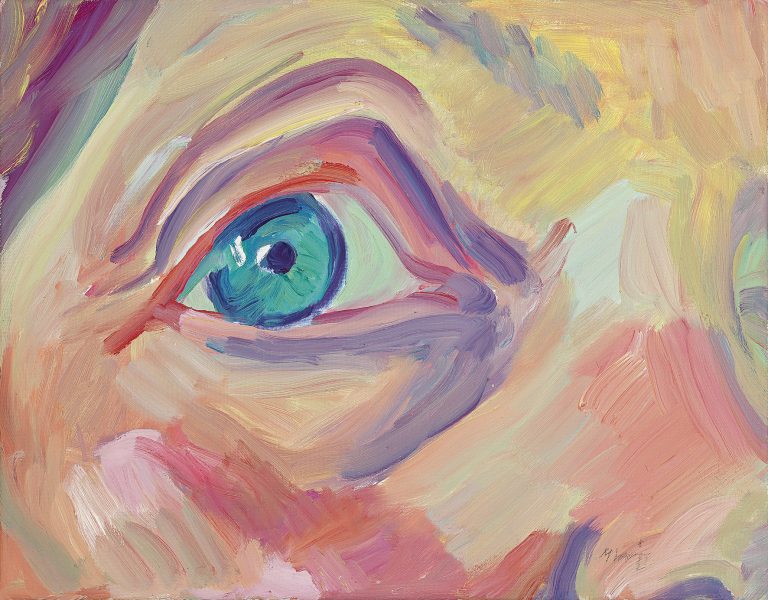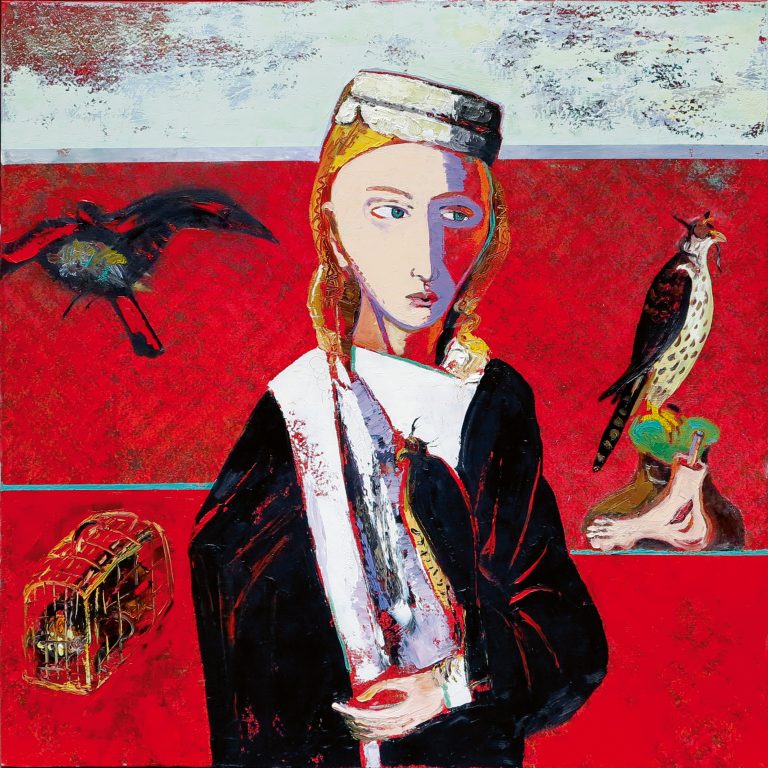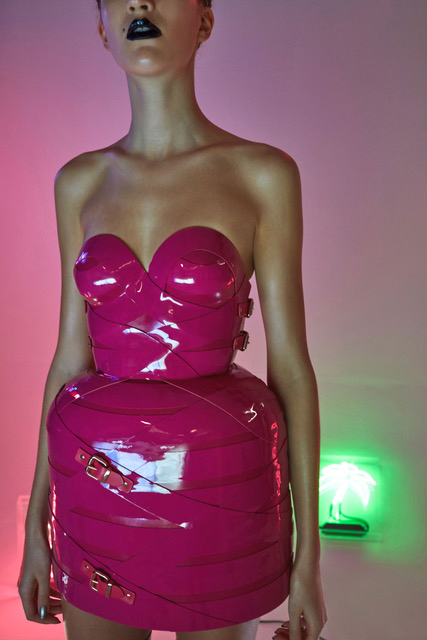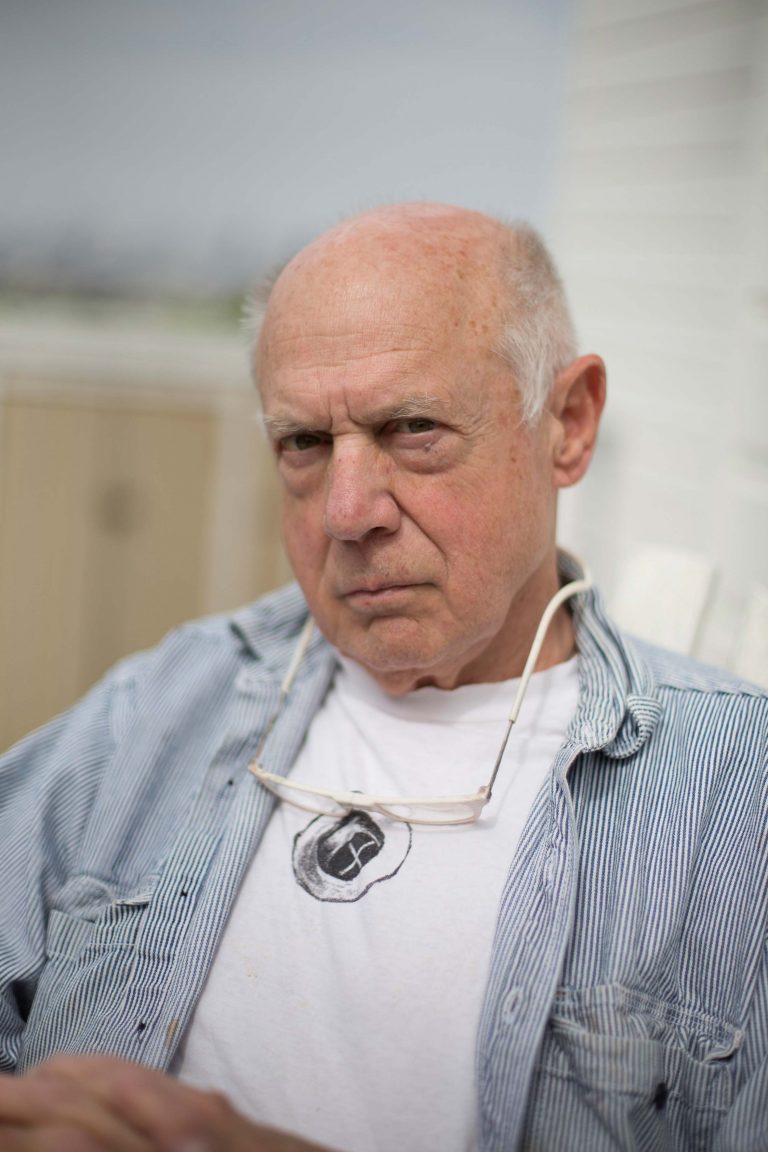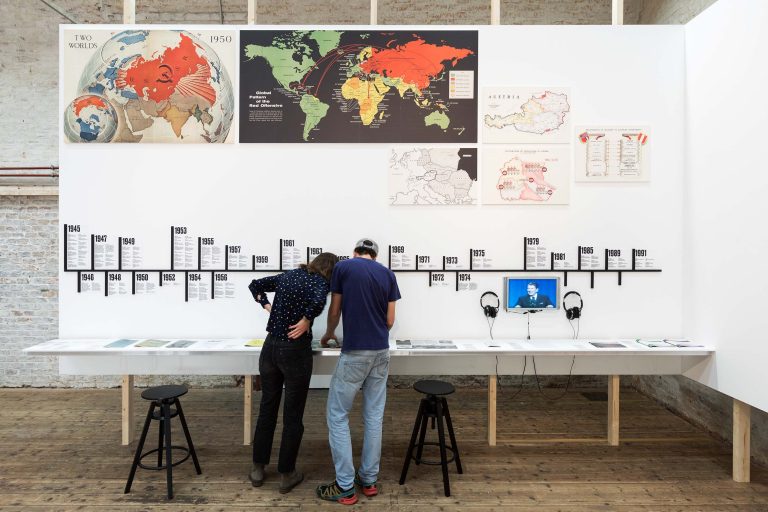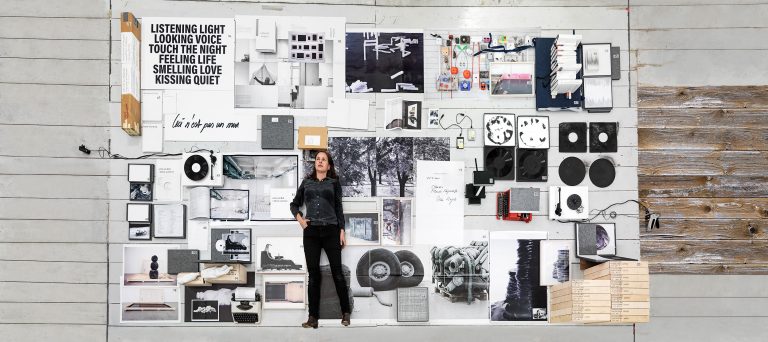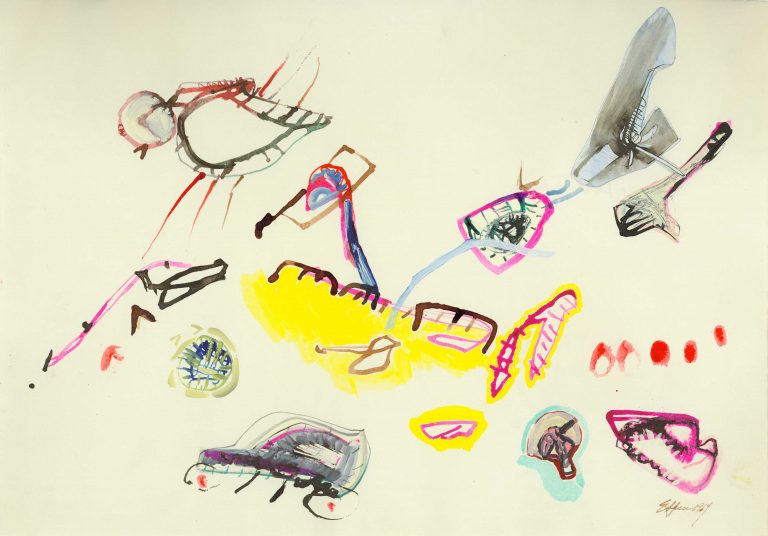Subtle visualizations – Angelika Loderer at the Belvedere 21
Under the title "Soil Fictions", Angelika Loderer's work is currently being shown in a solo exhibition at Belvedere 21.
A text by Sabine B. Vogel.
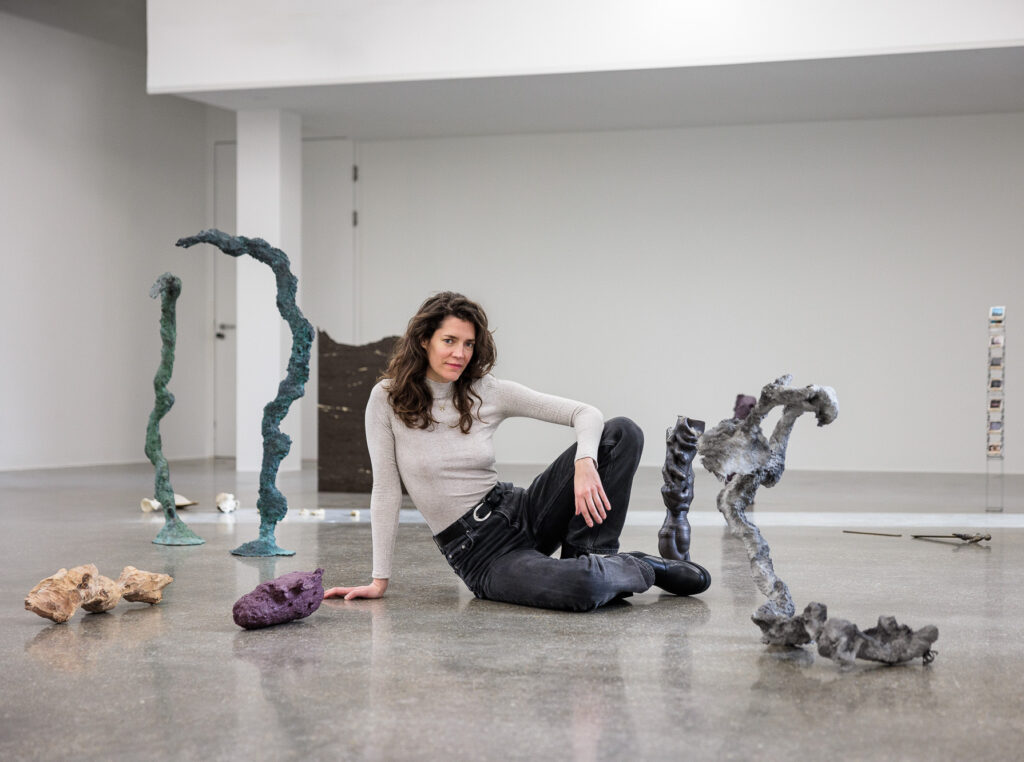
Angelika Loderer in the exhibition “Angelika Loderer. Soil Fictions”, Photo: Kunst-Dokumentation.com, Manuel Carreon Lopez © Bildrecht, Vienna 2024
The sculptor Angelika Loderer has already been shown twice in group exhibitions at the Belvedere. Now her work is being shown in a solo exhibition. Chief curator Luisa Ziaja calls it a “retrospective” in which Loderer’s “confrontations of the earlier years are condensed”. The central theme is the transformation of the normally invisible, which surrounds us every day, into the visible. The artist, who was born in Feldbach, Styria, in 1984, speaks of “subtle visualizations” when she pours out woodpecker holes and mole tunnels, for example. These series, which she has been pursuing since 2012, are called “pouring holes” – and now also form the first series of the “material or form carpet”.
This is how curator Verena Gamper describes the presentation in the basement of the 21er Haus. Without plinths, the sculptures lie neatly next to each other on the floor, row by row. We have to bend down towards the works – and this is certainly motivated by the content. The floor plays a recurring role in Loderer’s work, from respect for all creatures to the place where she finds artistic forms.
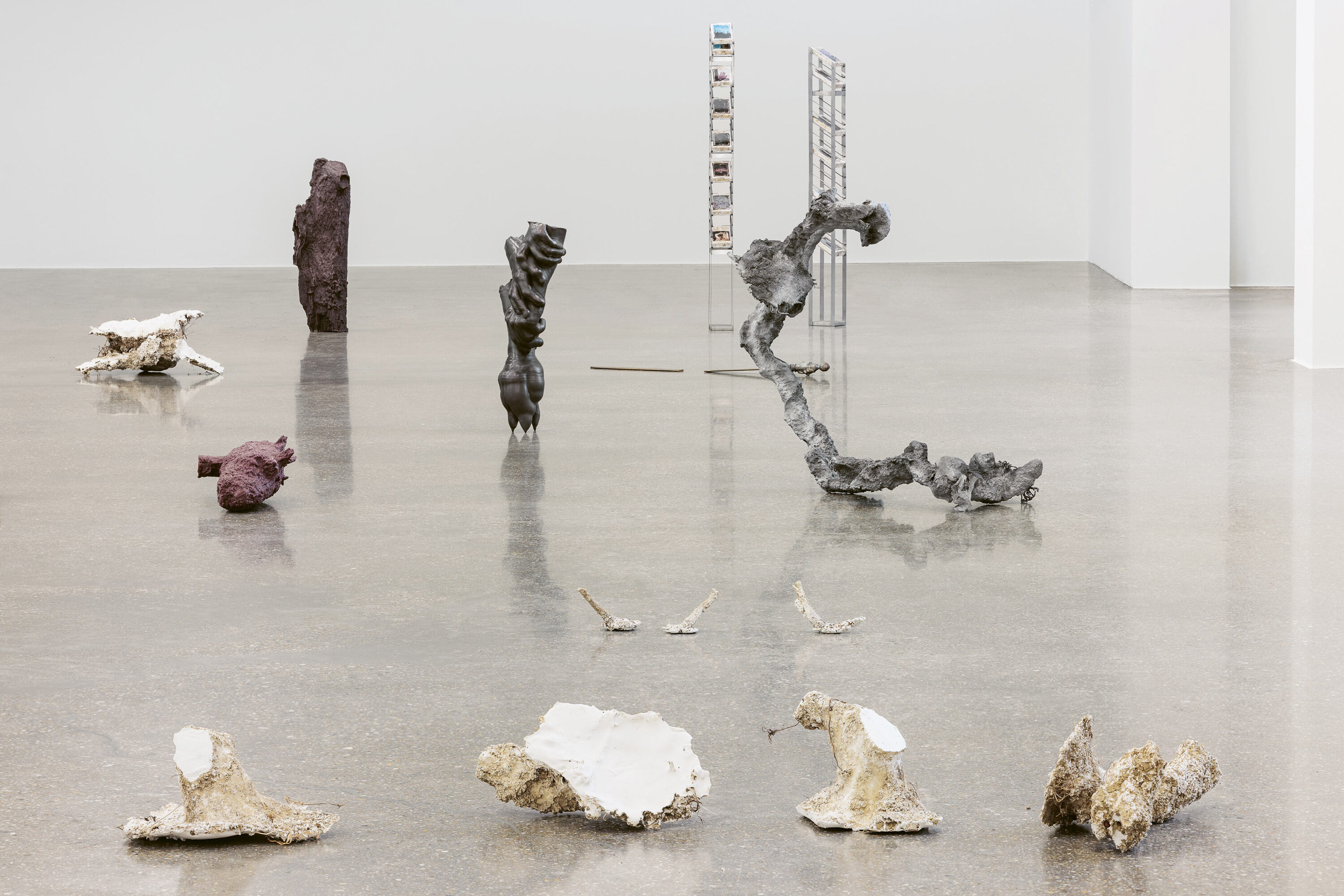
Exhibition view "Angelika Loderer. Soil Fictions", Photo: Kunst-Dokumentation.com, Manuel Carreon Lopez © Bildrecht, Vienna 2024
This also includes the almost abstract-looking “Roadkill” bronze sculptures. These are casts of animals flattened in traffic – hedgehogs, snakes, birds – that are attached to the ground in a perfidious way. The cast channels serve as small pedestals. Loderer also found bone remains and wasp holes made of clay, which she emphasized during the press tour that she did not have to transfer into a new form in order to add them to the ‘carpet’. She explains the presentation of the accurately placed sculptures next to each other as a reminder of archaeological excavation sites. But also as a way of treating motifs, materials and forms equally.
The title “Soil Fictions” also plays with the idea of the soil “as the habitat of the many”, as Gamper explains. We humans only appear in it as set pieces, in the wax casts of hands and shoes. This creates a strange, emotionally confusing coexistence of people and animals, which culminates in the shelves at the end of the rows: Small, postcard-like photographs of ephemeral moments are covered in a mushroom culture that slowly dissolves the memory images. Are we humans or our role in the world as a whole disappearing into increasing invisibility here?
